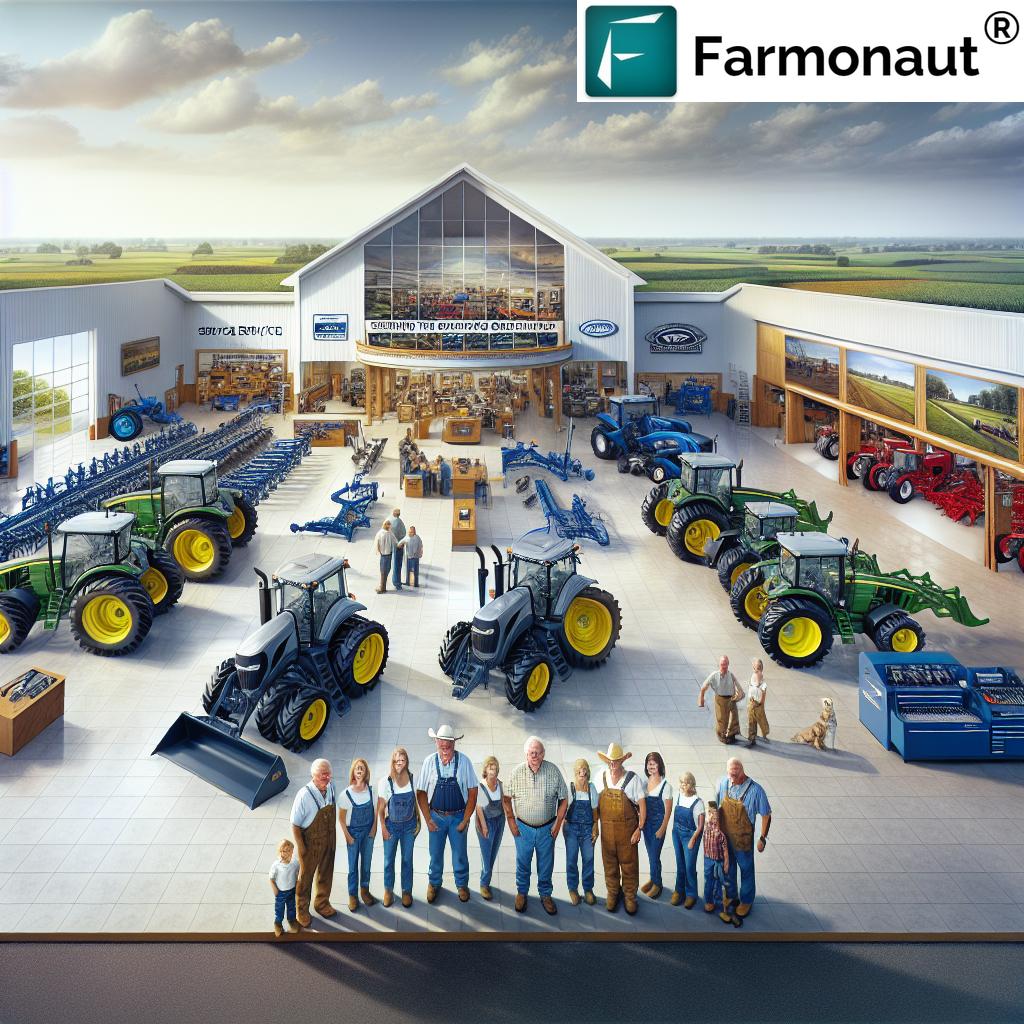Table of Contents
- Introduction: Amish Heritage Museum Illinois – A Legacy Rooted in Tradition
- 7 Ways Arthur Preserves Rich Tradition at the Amish Heritage Museum
- Heritage Preservation Activities Overview Table
- Experience the Amish Heritage Museum Illinois: Site, Facilities, and Insights
- Commitment to Hands-On Agricultural Learning & Educational Programming
- Gallery, Rotating Exhibits & Immersive Community Events
- Sustainability, Farming, and Technology: Why Heritage & Innovation Matter
- Frequently Asked Questions
Amish Heritage Museum Illinois: 7 Ways Arthur Preserves Rich Tradition
Nestled between Arthur and Arcola on Illinois Road 133, the Amish Heritage Museum Illinois stands as a vibrant testament to sustainable agricultural roots and Amish culture. This unique center offers more than a static view of history—it is a dynamic, living classroom, enveloping us in the enduring values, resilience, and legacy of the Arthur Amish community.
As announced by executive director David King, the upcoming 10,000-square-foot museum and visitor center is designed to be a transformative hub for hands-on agricultural learning, genealogy, historical expositions, and engaging community events. By delving into Illinois Amish historical sites and living heritage, this institution inspires all of us—schoolchildren, scholars, and lifelong learners alike—to foster a deeper understanding and appreciation for an essential facet of Illinois’ past, present, and sustainable future.
7 Ways Arthur Preserves Rich Tradition at the Amish Heritage Museum Illinois
Exploring how the Arthur Amish community and the museum’s organizers consciously safeguard both the tangible and intangible aspects of Amish tradition unveils a remarkable model of sustainability, education, and environmental stewardship. Let us journey through the seven pillars of preservation that anchor the Illinois Amish Heritage Center as a vital, living tribute to the region’s enduring roots.
1. Restoring & Showcasing Historical Amish Sites
- The museum encapsulates pivotal Illinois Amish historical sites such as the meticulously restored 1882 Schrock House, 1865 Yoder House, Miller Amish German School, and the reconstructed 1879 Herschberger-Miller Barn.
- We experience, firsthand, authentic Amish architecture, period furnishings, and original farming implements. These structures serve as a bridge between history and present-day sustainability.
- Commemoration events—like the remarkable moving of the oldest known Amish home in Illinois from Arthur to Chesterville, powered by a team of eight horses—reflect a tangible connection to tradition, manual skill, and environmental respect.
2. Promoting Hands-On Agricultural Learning
- One of the museum’s foundational missions is to operate as a center for hands-on agricultural learning. Through live demonstrations in both traditional and sustainable farming methods, we can actively partake in the time-honored cycle of working the soil, crop rotation, and stewardship of nature.
- Annual events such as “Sheep to Yarn to Quilts” and “Harvest to Home” allow visitors to see—and often participate in—fiber processing, quilting, and fieldwork, linking us directly to Amish farming traditions.
- This living classroom nurtures a shared appreciation for resource conservation and mindful agricultural practices—values integral to both the Arthur community and sustainable farming worldwide.
3. Facilitating Amish Culture Education & Field Trips
- The site has become a recognized destination for amish children field trips, school group tours, and curriculum development. Educational programming targets K-12 students, educators, and scholars—making amish culture education both accessible and engaging.
- Rotating exhibits, guest speakers, and hands-on workshops are tailored to deepen our collective understanding of Amish values, resilience, and community legacy.
4. Preserving Craftsmanship Through Community Events
- The museum celebrates Amish craftsmanship through regular festivals, artisanal fairs, and seasonal markets. These local events support intergenerational skill transfer and maintain time-honored traditions in woodworking, carpentry, basketry, and textile arts.
- Attendees are not just observers but active participants in community gathering, echoing the communal ethos that defines Arthur’s Amish.
5. Genealogy Research and Preservation of Archives
- Through its genealogy research & archives center, the site enables visitors—whether local descendants or international scholars—to trace family roots and study the history and migration patterns of the community.
- This resource has become crucial for people invested in coles county amish history and the broader legacy of the Amish in Illinois, anchoring our collective memory for future generations.
6. Curating Living History Experiences
- Unlike traditional museums, this center is an environment where history you can feel is created, as stated by Executive Director King. By integrating storytelling, live demonstrations, and interactive exhibits, the center bridges the gap between “then” and “now.”
- From barn raisings to apple-butter stirring over open fires, visitors step directly into the rhythms and rituals of amish life.
7. Sustaining Agricultural Heritage Through Innovation
- As a linchpin for amish farming traditions, the center collaborates with educators and sustainability advocates to demonstrate adaptive agricultural practices and resource conservation-based living.
- This mission positions the museum as a catalyst for both heritage preservation and contemporary environmental stewardship, embodying the values of responsible land use and mindful consumption.
Heritage Preservation Activities Overview
Experience the Amish Heritage Museum Illinois: Site, Facilities, and Insights
The Illinois Amish Heritage Center is situated near Arthur and Chesterville—a region known for its rolling fields and tightly knit community. It is accessible via County Road and is only minutes from the town centers of both Arthur and Arcola.
- Modern Visitor Center: A soon-to-be completed 10,000-square-foot facility, designed as a central hub for exhibit galleries, educational programming, community gathering, and immersive events.
- Exhibit Gallery: Multi-use gallery spaces deliver fresh perspectives through rotating exhibits, speakers, and interactive displays introducing visitors to the Amish way of life.
- Children’s Discovery Area: Specially designed for the youngest visitors, ensuring amish children field trips are as memorable as they are educational.
- Historical Homes & Farm Buildings: Explore the Schrock House (1882), Yoder House (1865), schoolhouse, and Herschberger-Miller Barn—all centered around authentic landscapes and fields, maintained in the tradition of amish farming.
- Genealogy & Archives: Research family connections or delve into the deep roots of coles county amish history.
- Gift Shop, Local Artisans, and Amish Country Goods: Support the community by purchasing handmade products, implement carvings, and locally produced foods.
- Facility Rental and Catering: Book spaces for private or school events, utilizing locally sourced catering in line with amish values of simplicity and quality.
By leveraging real-time data and sustainable resource guidance, Farmonaut’s carbon footprinting tools empower modern and traditional farmers alike. These practices not only reduce environmental impact but echo the conservationist spirit at the heart of Amish agriculture.
Commitment to Hands-On Agricultural Learning & Educational Programming
The Amish Heritage Museum Illinois is recognized for its innovative approach to amish culture education. Here, the act of learning is immersive, collaborative, and deeply rooted in everyday experience:
- Interactive Schoolchildren Programming: Developed in partnership with educational leaders to ensure that all lessons, workshops, and tours are age-appropriate, curriculum-aligned, and impactful.
- Speaker Series & Scholar Outreach: Host to historians, agricultural scientists, and local artisans, these series underscore the interconnectedness between traditional wisdom and modern sustainability.
- Resource Library & Digital Archive: Access research papers, oral histories, and restored documentation to deepen our collective understanding of amish legacy.
We see a vision where hands-on learning cultivates respect for both knowledge and nature. As digital technology meets living tradition, visitors leave the center with skills and memories that last a lifetime.
For those concerned with sustainable supply chains or artisan-made goods, Farmonaut’s blockchain-based traceability system provides peace of mind, ensuring that every handmade product’s journey—like the items from Arthur’s Amish crafters—is verifiable from soil to store.
Gallery, Rotating Exhibits & Immersive Community Events
The visitor gallery is the creative and educational heart of the museum. Each season brings new exhibitions, highlighting everything from an 1800s classroom to surviving historical farming tools, Amish quilts, and even interactive digital archives showcasing the growth of coles county amish history into the future.
-
Annual Highlights:
- April: Sheep to Yarn to Quilts offers a unique farm-to-fabric experience.
- October: Harvest to Home is an immersive festival with historical farming techniques, demonstrations, and authentic fall traditions.
- Ongoing: Amish country tours guide attendees through Arthur, the museum site, meals in local homes, and curated stops at local attractions.
- Private & Corporate Events: The facility is available for educational retreats, teambuilding, school outings, and more, amplifying the impact of amish values in today’s society.
Contributing to the Community: Volunteerism and Legacy-Building
- This project is a product of years of steadfast support, grant funding, and volunteer effort. The ongoing construction—valued at over $3 million—is an invitation for all of us to join in equipping future generations with actionable wisdom, not just preserved stories.
- As we gather for these events and celebrations, we reinforce the center’s mission: to be a living, breathing resource rooted in the unique soil of Amish tradition, but shared with the entire Illinois region and beyond.
Enhance farm logistics with Farmonaut Fleet Management: Efficient tracking for Amish and modern farm vehicle fleets
Explore crop verification for loan and insurance — Safeguard community farming investments
Explore Farmonaut Subscription Plans
Sustainability, Farming, and Technology: Why Heritage & Innovation Matter
The foundation of the Amish Heritage Museum Illinois is the shared belief that sustainable farming and resource mindfulness are the seeds of cultural growth and environmental resilience. By preserving authentic agricultural practices and intertwining hands-on experience with 21st-century technology, we help cultivate a future where food, community, and conservation are woven together.
- Farmonaut’s Large-Scale Farm Management app is a powerful tool for agribusinesses overseeing wide tracts of farmland: supporting precision, stewardship, and the kind of scalable practices that echo the collective values seen in Amish communities.
- Whether it’s through AI-driven crop advisory systems, resource monitoring, or blockchain-based product traceability, digital innovation continues to support the same conservationist principles taught on the soil of Arthur—and in the living classrooms of its museum.
- For agricultural education, Farmonaut also provides API access (see here and developer docs) enabling researchers, app developers, and university programs to integrate real-time satellite data and insights directly into their own farming heritage initiatives.
As we, together, build bridges between the wisdom of the past and the demands of the future, the story of Amish farming tradition and environmental stewardship enriches us all—from Illinois to the world.
Frequently Asked Questions
What is the focus of the Amish Heritage Museum Illinois?
The Amish Heritage Museum Illinois in Arthur is dedicated to preserving the Amish community’s agricultural, cultural, and social traditions in a living, hands-on environment. The center offers tours, historical site visits, field trips, and immersive events, all rooted in sustainability and Amish values.
Where is the Amish Heritage Center located?
The museum sits on Route 133 between Arcola and Arthur, Illinois, with a campus including restored farm buildings and new educational facilities—making it an accessible hub for the Arthur Amish community and regional visitors.
Can school groups book educational field trips?
Yes—amish children field trips and programming for all school levels are a core part of the museum’s mission. The site provides interactive curricula and hands-on activities for schoolchildren and educators exploring amish culture education.
What events take place at the museum?
Seasonal highlights include Sheep to Yarn to Quilts (fiber arts event), Harvest to Home (fall farming techniques), rotating exhibits, craft demonstrations, and country tours—showcasing amish farming traditions and community life.
How does the Amish Heritage Museum Illinois incorporate sustainability?
The center operates as a living classroom, teaching eco-friendly farming, local resource conservation, and communal values that have underpinned Amish society for over 150 years. This legacy aligns with global efforts—such as Farmonaut’s carbon footprinting—to inspire environmental action.
Are the facilities available for public and private events?
Yes, the new visitor center offers rental space and local catering for private, school, or corporate events, encouraging a wider audience to connect with the center’s heritage mission.
How does the museum support community heritage and economic development?
By supporting artisan craft, local produce, educational workshops, and historically significant events, the center acts as an economic and cultural anchor for Arthur, Ches terville, Coles County, and beyond—serving both the community and heritage tourism for years to come.
Conclusion: Building Our Shared Heritage, Together
The Amish Heritage Museum Illinois in Arthur is far more than an archive of the past—it’s a vibrant hub for learning, gathering, and building our shared future. Through hands-on agricultural education, authentic community events, and unwavering respect for the land, the center ensures that the quiet strength, skill, and spirit of the Amish will continue to shape Illinois for years to come. Join us in this living legacy—one rooted in the soil of tradition, and growing into the promise of tomorrow.
To explore more about sustainable farming, heritage, and precision agriculture, download the Farmonaut app today or contact us for educational resources and advanced agri-management tools.


















